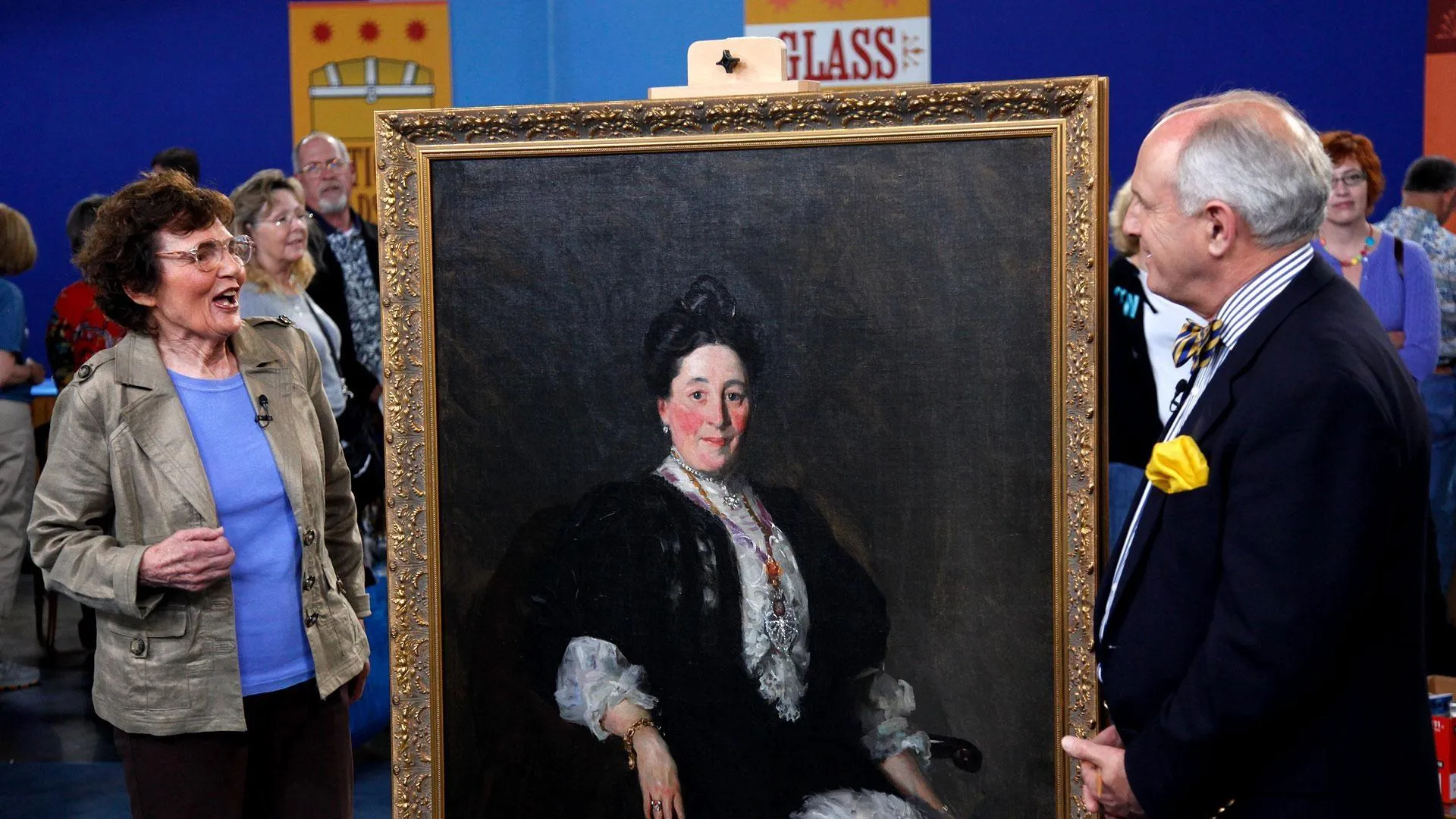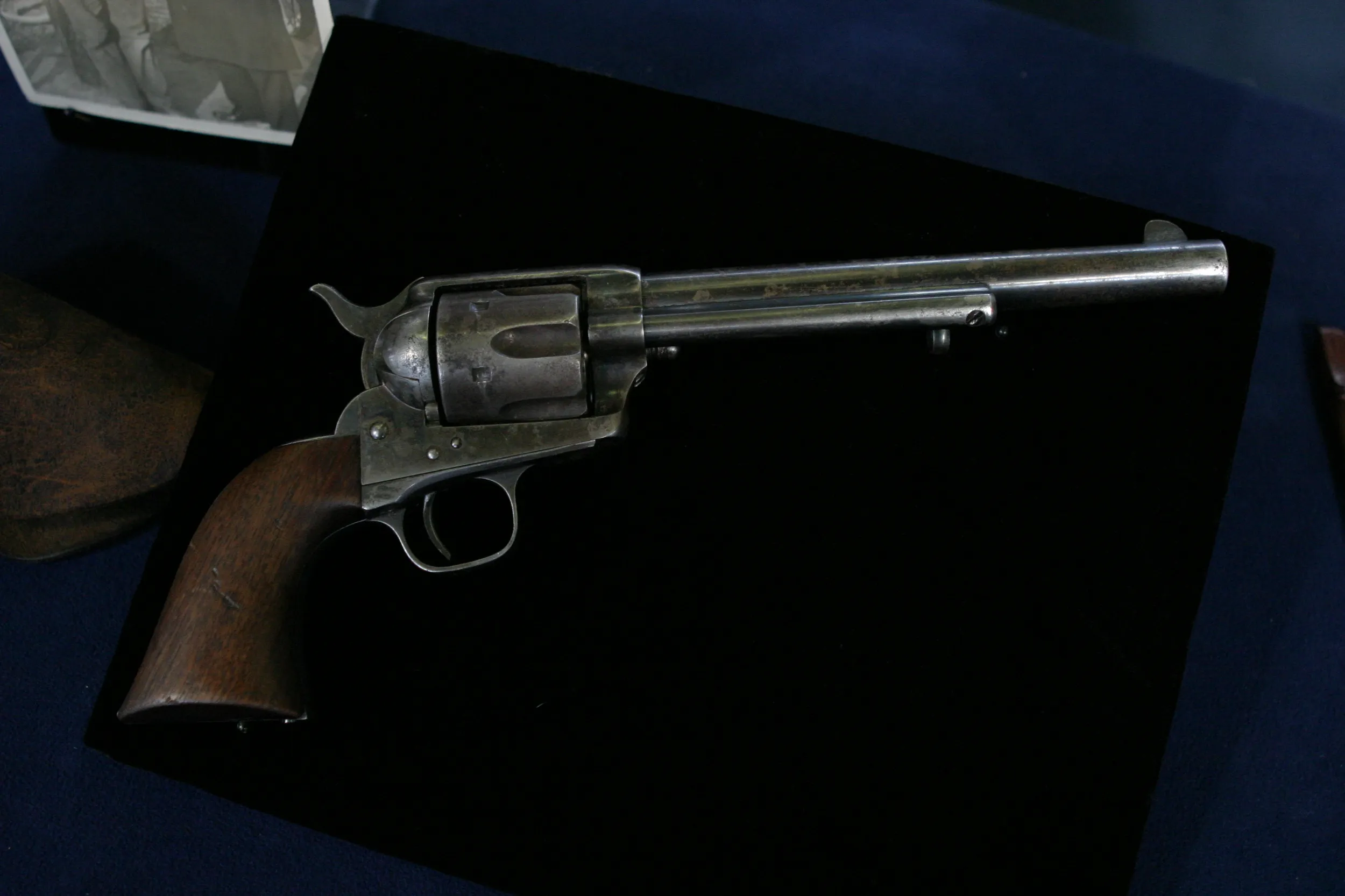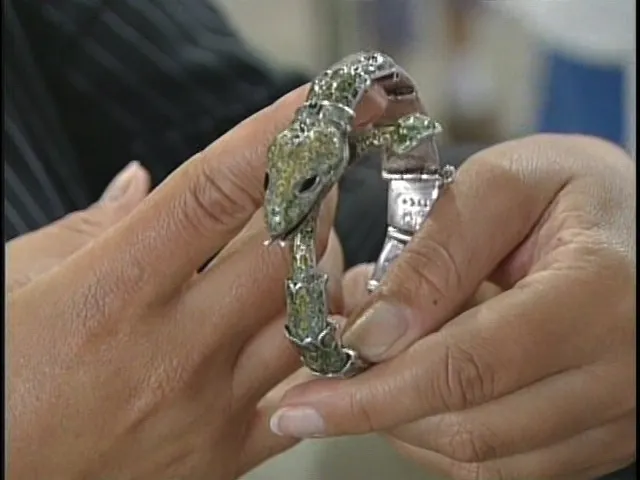GUEST: I brought an English bracket clock. We found it in a local antique show about nine to ten years ago. It has eight bells. Every quarter it makes a little nice music on the quarters. And on the full hour, it strikes the hour on a gong. It is signed by a maker in Brighton, England. I tried to find out some information on the maker. Nor in the library, nor on the Internet was I able to find out a lot. I found his name, but basically that's it.
APPRAISER: Have you been able to determine its age at all?
GUEST: Yeah, in my opinion, it is from 1770 to 1780.
APPRAISER: Okay. And what is the finish here, do you think?
GUEST: In my opinion, it is tortoiseshell.
APPRAISER: And why did you buy a clock like this, Dick?
GUEST: I fell in love. The price was right, in my opinion.
APPRAISER: And what did you pay for it?
GUEST: I paid $1,800.
APPRAISER: Well, it's a beautiful clock, and it's very attractive. It's an English bracket clock, and you're correct about that. You're not correct about the age. It was made by a gentleman named Boxell in Brighton, England. He worked around 1851 to 1878. This is not tortoiseshell. This is actually celluloid. You wouldn't find a clock of this time period with the tortoiseshell on it. The sections are very big on it. Usually they're smaller than that. It's made to imitate tortoiseshell. If we look at some of the features on this clock, it has a silent strike mechanism up here, so you can turn off the nest of eight bells when it's striking, so it won't keep you up at night. It has a beautiful applied silver chapter ring right here. It has these beautiful ormolu mounts and these nicely scrolled feet that have remnants of its original gilding on it, which is very nice. If I turn the clock around, what's really nice is that it's also signed on the back, and it's also numbered, which is kind of neat. It has this fusee movement that's incredible-- really thick plates, the quality is fantastic. But another indication of its age being later than you think is this gong here that it has in the back. You wouldn't find a gong like this on an 18th-century clock. The good thing is, you paid $1,800 for this clock, and that was a very good price for it, even though this is imitation or faux tortoiseshell. In a retail setting, I would suspect that this clock would sell for around $4,500.
GUEST: Okay. I know he had a son later, in a later period.
APPRAISER: Right.
GUEST: And you're not confusing with his son?
APPRAISER: I am not confusing with the son. I'm very confident that it is late Victorian. It's a wonderful clock, and thank you for bringing it in.
GUEST: Thank you for the information.











